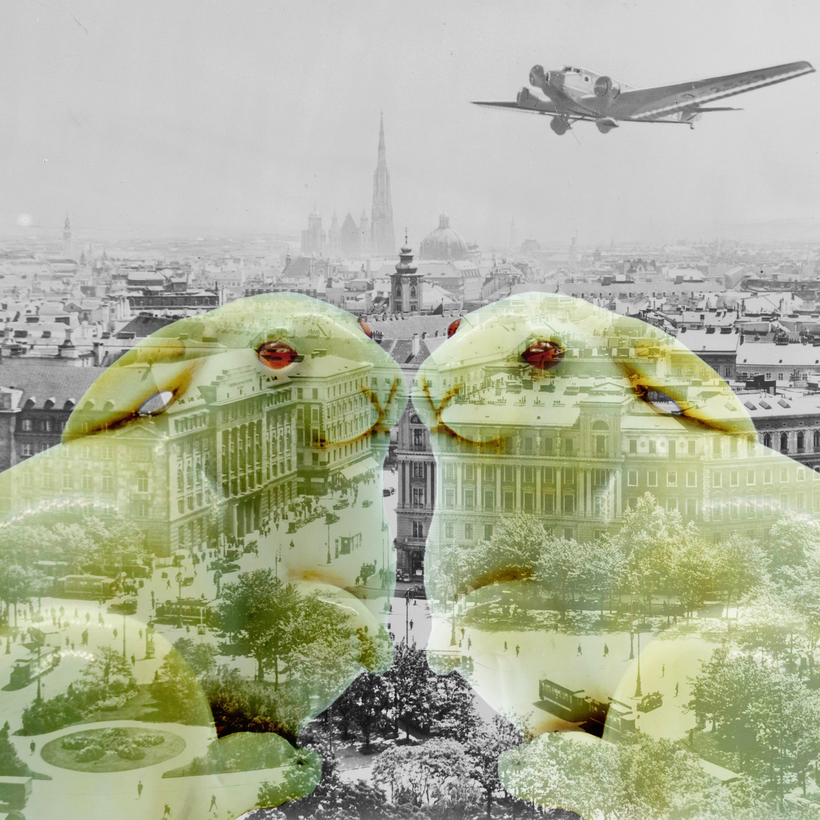The British artist and author Edmund de Waal has just returned from Paris, where a show inspired by his latest book, Letters to Camondo, opened at the Musée Nissim de Camondo. He is now preparing for a trip to Vienna, where 100,000 copies of his first book, the acclaimed family memoir The Hare with Amber Eyes (2010), will be distributed across the city as part of the One City, One Book annual event. From Vienna, de Waal heads to New York City, where an exhibition inspired by The Hare with Amber Eyes opens at the Jewish Museum on November 19.
Our meeting takes place in his South London studio, a kind of Batman’s lair—a minimalist haven and state-of-the-art gallery space and ceramic studio tucked inside an incongruous industrial building. There is an exciting experimental vibe here, and you get the sense that de Waal and his assistants, with cutting-edge kilns and new scientific approaches, are pushing porcelain into the beyond.

De Waal has been throwing pots since he was five years old, and his latest work is displayed on three floating shelves, where the pieces quietly radiate an extraordinary beauty. Their simplicity is deceptive. It is clear that their creator draws from a deep fund of knowledge, which he has been building since his childhood.
De Waal grew up near two of England’s most beautiful cathedrals—Lincoln and Canterbury; his father, Victor, was the dean of the latter. It is Victor’s mother, the novelist Elisabeth de Waal, who was the link to the Russian-Jewish Ephrussi dynasty, the illustrious family that de Waal explored in The Hare with Amber Eyes. That history, and the unknown buried deep within these cathedral towns, inspired him, de Waal tells me when I ask him when he first started looking for secrets.

“When I was a child in Lincoln, I grew up in a storied place,” he says. “We lived in medieval houses. There was a sense of secrecy and mystery, intermingled with sadness.” This early sense of curiosity found its reward when de Waal discovered, as a teenager, that despite his upbringing in the heart of the Church of England, with its culture of modesty and probity, his family history was quite different.
It is hard to imagine the moment when de Waal grasped not only the importance and grandeur of his Ephrussi forebears, with their fabulous power and wealth, but the incomprehensible horror and loss they experienced during the Holocaust, when the family lost its fortune and an extensive art collection (including paintings by Jean-Honoré Fragonard, Berthe Morisot, Claude Monet, Gustave Moreau, and Auguste Renoir) to Nazi looting.

“Well, my father had an Austrian accent, so I always knew,” de Waal says, “but I started to learn from my grandmother Elisabeth. I started sending her my poems when I was about 12, and she had this wonderful library. She had had a great friendship with [the Austrian poet Rainer Maria] Rilke, but she did not really tell me the whole story. It was when I went to Japan, at age 17, and first met my great-uncle Iggy Ephrussi that I started to truly understand how extraordinary my family had been.
“Iggy was utterly charming,” de Waal says of his grandmother Elisabeth’s brother. “He had the most exquisite manners because of his Viennese upbringing. By the time I met him he was representing a Swiss bank in Tokyo and having a very interesting life. He was also the center point in the family’s correspondence, so my real understanding of the story started to unfold in his apartment with the netsuke which were kept there.”

The netsuke de Waal refers to—a collection of 264 Japanese wood and ivory carvings, Edo-period miniatures that were passed down by the Ephrussi over generations and eventually left to de Waal—form the pathway between past and present in The Hare with Amber Eyes. The 150 pieces that currently make up the Ephrussi netsuke collection—the rest were lost or broken over the years—will be on view at the Jewish Museum, where they join other family and loaned artifacts to bring this dazzling dynasty back to life.
“Edmund de Waal: Lettres à Camondo” is on now at the Musée Nissim de Camondo, in Paris. “The Hare with Amber Eyes” is on now at the Jewish Museum, in New York City
Sarah Hyde is a London-based writer
